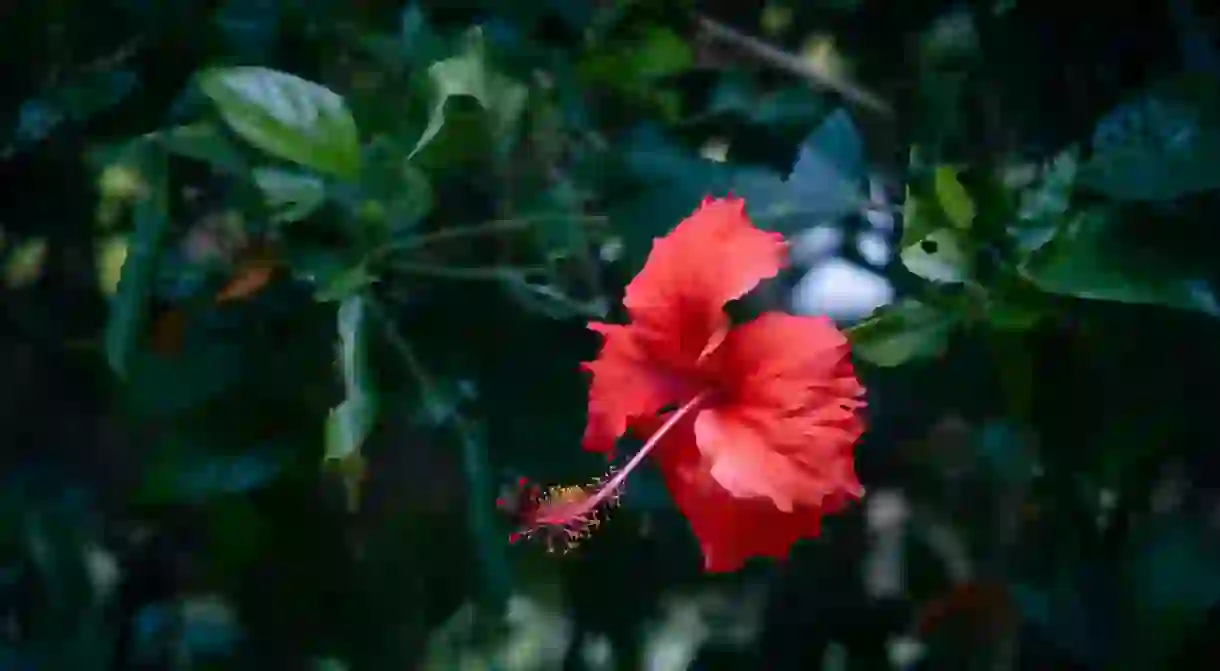The History of Cambodia's Killing Fields

During the Khmer Rouge reign, from 1975 to 1979, an estimated 1.7m to 2.5m Cambodians died from execution, starvation or disease – almost a quarter of the population. Killing fields dot the country, with more than 20,000 mass grave sites containing more than 1.38m bodies, according to the Documentation Centre of Cambodia. The largest of the killing fields was Choeung Ek, which sits on the outskirts of Phnom Penh and today serves as a monument to all those who died – and those who survived. It is also an educational tool that could help us to ensure that history of Cambodia never repeats itself.
Did you know you can now travel with Culture Trip? Book now and join one of our premium small-group tours to discover the world like never before.
History

Angkor Wat, Siem Reap, Cambodia
One of the darkest times in modern history was in Cambodia between 1975 and 1979, when the Pol Pot-led Khmer Rouge ruled the country. They promised peace after years of civil war and secret bombing campaigns from the United States; Cambodians flocked the streets to welcome soldiers during the fall of Phnom Penh on 17 April 1975.
However, the promised peace never came, and residents were rounded up and sent to the countryside as part of the communist regime’s plans to create an agrarian society. Personal possessions were confiscated, money abolished, family ties severed and the almighty Angkar (the Khmer Communist Party) set brutal laws that sent the population to work the land under appalling conditions.
Tuol Sleng – S-21 – was the main political prison, and was where suspected enemies of Angkar were sent. As Pol Pot and the top commanders’ paranoia spiraled, so did the number of Cambodians detained here. Once inside, prisoners were either tortured to death or sent to nearby Choeung Ek for re-education – meaning execution. An estimated 12,273 were detained at S-21, with only seven known survivors.
Those sent to Choeung Ek made the 17km (11mi) journey crammed into the back of trucks. Once there, many were blindfolded and, not wanting to waste bullets, soldiers smashed spades into their heads before pushing them into pits containing the dead bodies of thousands. It is thought that about 17,000 men, women and children were executed at the site.
In 1980, the remains of almost 9,000 people were exhumed from the mass graves that litter the former orchard. Many of these skulls now sit in a memorial stupa that was created in 1988 and forms the centerpiece of the site, serving as a reminder of the bitter past and helping to ensure the lives lost are never forgotten.
Impact

Today, it’s hard to imagine a former longan orchard is a place that harbours such horror. Birdsong rises from the trees, the gentle breeze wafts through manicured fields, flowers bloom, shimmering paddies surround the site and life goes on.
However, this isn’t any orchard in Cambodia; it was the main Khmer Rouge killing field, and horrific reminders can be found at every step – a visit to Choeung Ek is a sobering one. Of the 129 communal graves, 43 have been left untouched. The many bone fragments, teeth and scraps of bloodied cloth retrieved sit in glass containers for visitors to see.
An audio tour guides visitors around the site, with compelling stories from survivors, guards and executioners. A visit to the Killing Fields is harrowing, emotional, and draining, but it offers a compelling insight into a fraction of the atrocities that took place across the country under the genocidal regime.
Remembrance
Choeung Ek was transformed into a memorial site and tourist attraction in a bid to educate Cambodians – and the world – about what happened, while also commemorating those who died. A memorial ceremony is held on 9 May each year, at which Khmer Rouge survivors and their relatives, officials, students from across Phnom Penh and other Cambodians gather at the stupa to remember the dead.
The Killing Fields as a tourist site
Historical Landmark

While there is a healthy debate on the ethics of ‘dark tourism’, it is also essential that we remember tragedies and horrors of the past, so we can learn from it. If you are compelled to visit the site, just remember to be respectful during your visit. Dress appropriately, don’t snap disrespectful selfies in front of skulls or bones and don’t smoke, drink or eat while touring the site. Your best bet is booking a guided tour, so you can be picked up at your hotel in Phnom Penh and taken to both the Toul Sleng Genocide Museum and the fields themselves, now known as the Choeung Ek Genocidal Center.
How to get there
Choeung Ek is about 17km (11mi) south of the Cambodian capital, Phnom Penh. A tuk-tuk ride will take about 40 minutes from central Phnom Penh. Entry includes an audio tour in several languages. Phnom Penh Hop On Hop Off offers shuttle-bus tours that pick guests up from their hotel. Several small eateries and stalls selling drinks and snacks can be found at the entrance.













